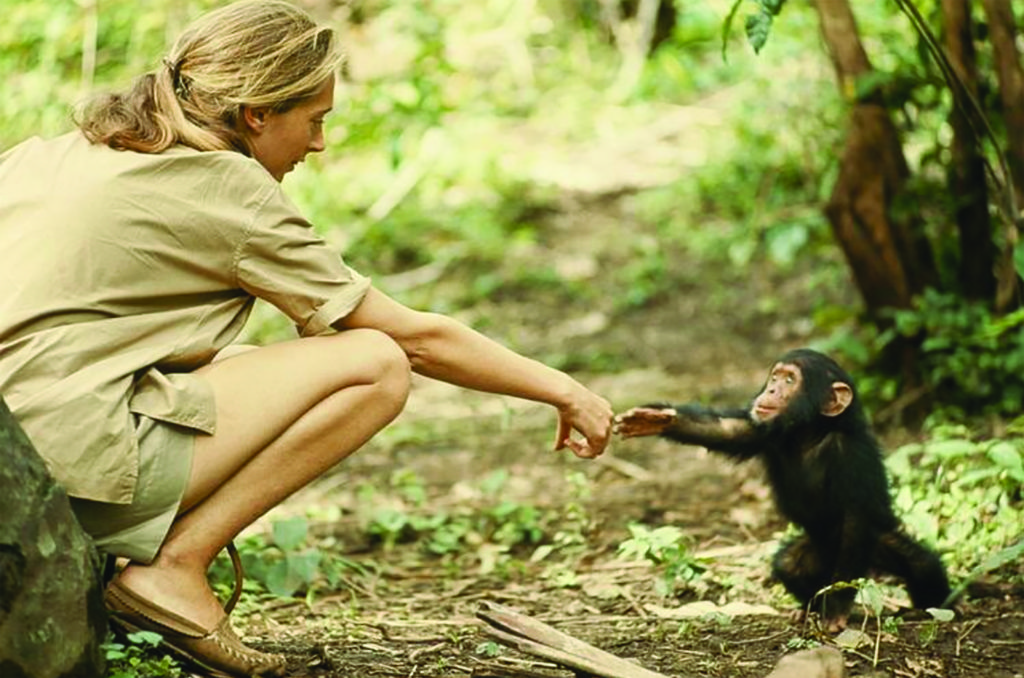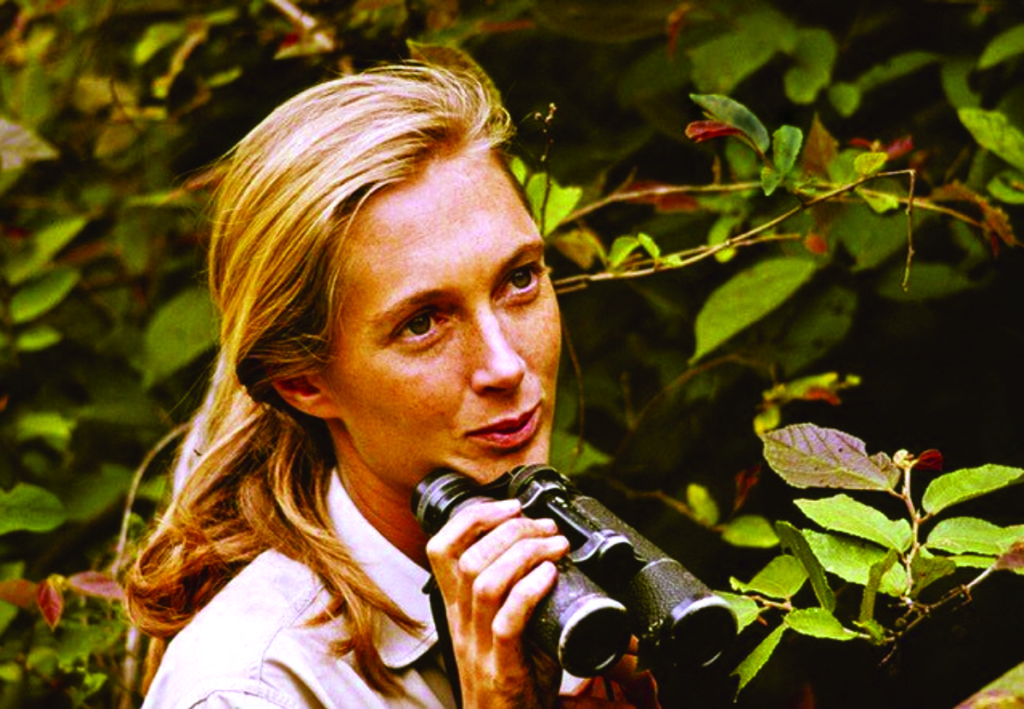
SHERYL SANDBERG: You started in the 1960s in Tanzania, living among chimpanzees. You not just documented their behaviors, but won the animals’ trust, opened a window into their lives and revolutionized our understanding of both chimpanzees and the environment.
JANE GOODALL: I was born loving animals. I popped out of the womb that way and I think the reason I was able to do what I’d done is because I had the most extraordinary mother. She supported this love I had. We were staying on a farm and I disappeared for more than four hours and the police were called, but when she saw me rushing towards the house with shining eyes, instead of getting mad at me, she sat me down to hear what I’d been doing, which was collecting the hen’s eggs. She found books about animals for me—Doctor Dolittle was a great one when I was about 8 and then when I was 10, a tiny book called Tarzan of the Apes. Of course, I fell in love with this glorious lord of the jungle and what does he do? He marries the wrong Jane.
SS: That’s so great.
JG: When I read Tarzan, I decided, “I’m going to Africa. I’m going to live with wild animals and I’m going to write books about them.” That was the passion. Everybody laughed at me. World War II was raging, Africa was still thought of as the dark continent, we didn’t have any money and I was just a girl. Girls didn’t do that sort of thing back then, but my mother always said if you really want something then you’re going to have to work really hard, take advantage of opportunity and never give up.
SS: Wow, that’s incredible.
JG: I’ve taken that message to children and adolescents around the world. Many of them tell me or write, “You taught me that because you did it, I can do it too.” That is the best reward I could possibly have.
SS: It’s inspiring. When you went to live with animals, your research showed us that chimpanzees were capable of rational thought, of emotion. What was the moment when you first realized that these animals were much more like us than people thought?
JG: It wasn’t the chimpanzees who taught me that at all. They reaffirmed it and made it easier for me to get other scientists to believe, but I learned it from a teacher when I was a child, and that was my dog, Rusty. You cannot share your life in a meaningful way with a dog, a cat, a guinea pig, a horse—I don’t care what it is—and not know that of course they have personalities, minds capable of thought, emotions.
SS: And it was a question of proving it to everyone else.
JG: The chimpanzees helped me to prove it because 98.6 percent of our DNA is the same—the immune system, the structure of the blood, the anatomy of the brain, it’s just that ours is bigger.
SS: The world owes Rusty a great debt.
JG: My mother and Rusty and the one chimp, David Greybeard, who let me get close when the others were running away. Those three are very important in my life.
SS: And to all of us. When you talk about the work of your institute, you think conservation is a clear issue everyone should believe in, but not everyone does.
JG: Look back and think about the indigenous people. They would say, “How does this decision we make today affect our people seven generations ahead?” Today, huge decisions are often made based on, “How will this benefit me now? How will this benefit my next political campaign? I’ve got to get all this money.” Doesn’t matter if it’s harming the environment. Doesn’t matter if it’s cruel to animals. It’s the wisdom we’ve lost. We’re on a planet with finite resources, but we’re treating those natural resources as though they’re infinite. You can’t have a way of thinking that can be unlimited economic growth on a planet with finite resources. We have to rethink how we live, how we interact with the natural world. I truly believe only when head and heart are in harmony can we achieve our true human potential.

SS: The other thing you’ve talked about a lot is that peace, war, violence, poverty—these things dramatically impact the environment. What is your message on these broader issues of peace?
JG: There are three huge problems that we have to somehow solve and one is extreme poverty. We have to do something about poverty, but then we have to do something about the unsustainable lifestyles of everybody else and finally, human population growth. These are huge problems, but until we solve them, we’ll never have true peace. We have to find better ways of doing with less and living in harmony with nature because the population is going to continue to grow.
SS: You spend 300 days of the year traveling and that’s an incredible thing to do at any age.
JG: I care passionately about the environment. I love the rainforest. I find it very spiritual in learning about the interconnectedness of all forms of life, which you extend out around the globe. I care passionately about my grandchildren—I’ve got three—and their children and our program for young people, Roots and Shoots, which is now in nearly 100 countries. There’s a theme running through: We need to learn to live in peace and harmony with each other between nations, between cultures, between religions and between us and Mother Earth.
SS: That’s beautiful.
JG: I have to spread it. That’s why I’m rushing around. It’s making a difference.
SS: It does. What’s a fun fact about chimpanzees most people don’t know?
JG: Most people don’t know that they can be taught in captivity more than 500 of the signs of American Sign Language and use them in the appropriate context.
SS: Wow, I certainly didn’t know that. What’s something from your work that makes you feel hopeful?
JG: The youth. The shining eyes everywhere I go in the world wanting to tell Dr. Jane what they’re doing, what they’d been doing, what they plan to do to make the world a better place.
SS: Thank you. Thank you for inspiring all of us.
This is an edited version of a Q&A Sheryl Sandberg did with Dr. Jane Goodall as part of the Lean In Live series.




